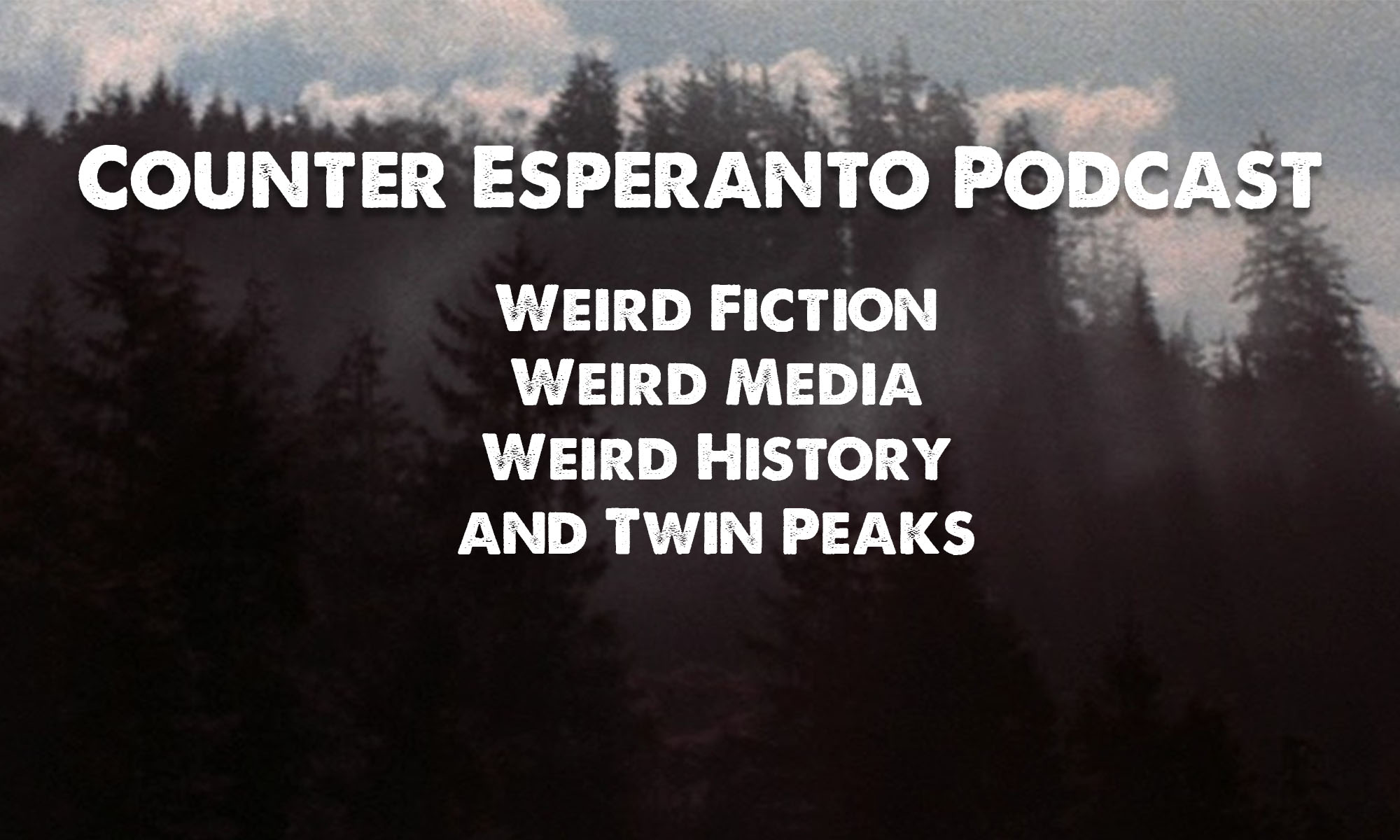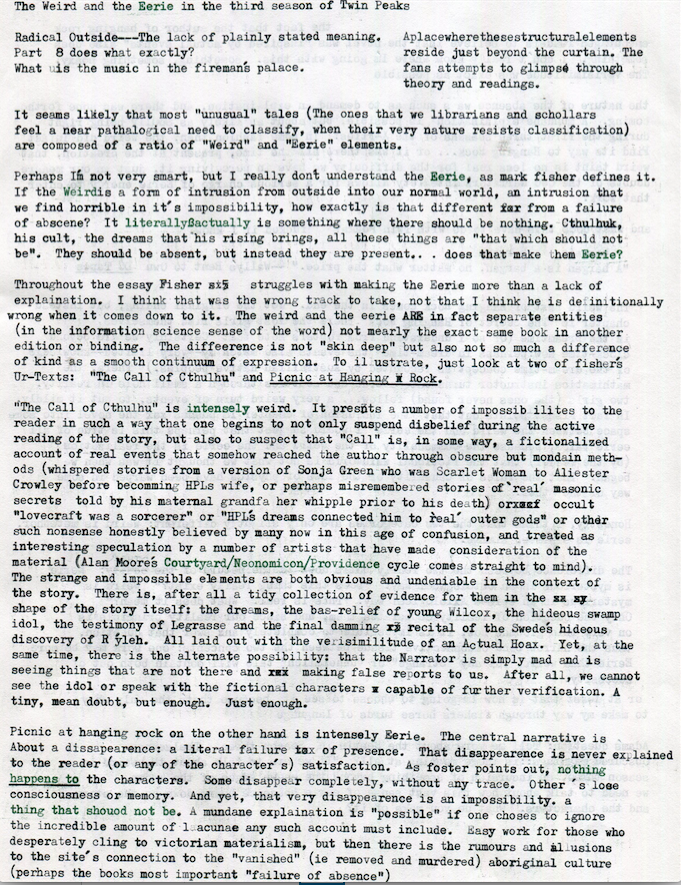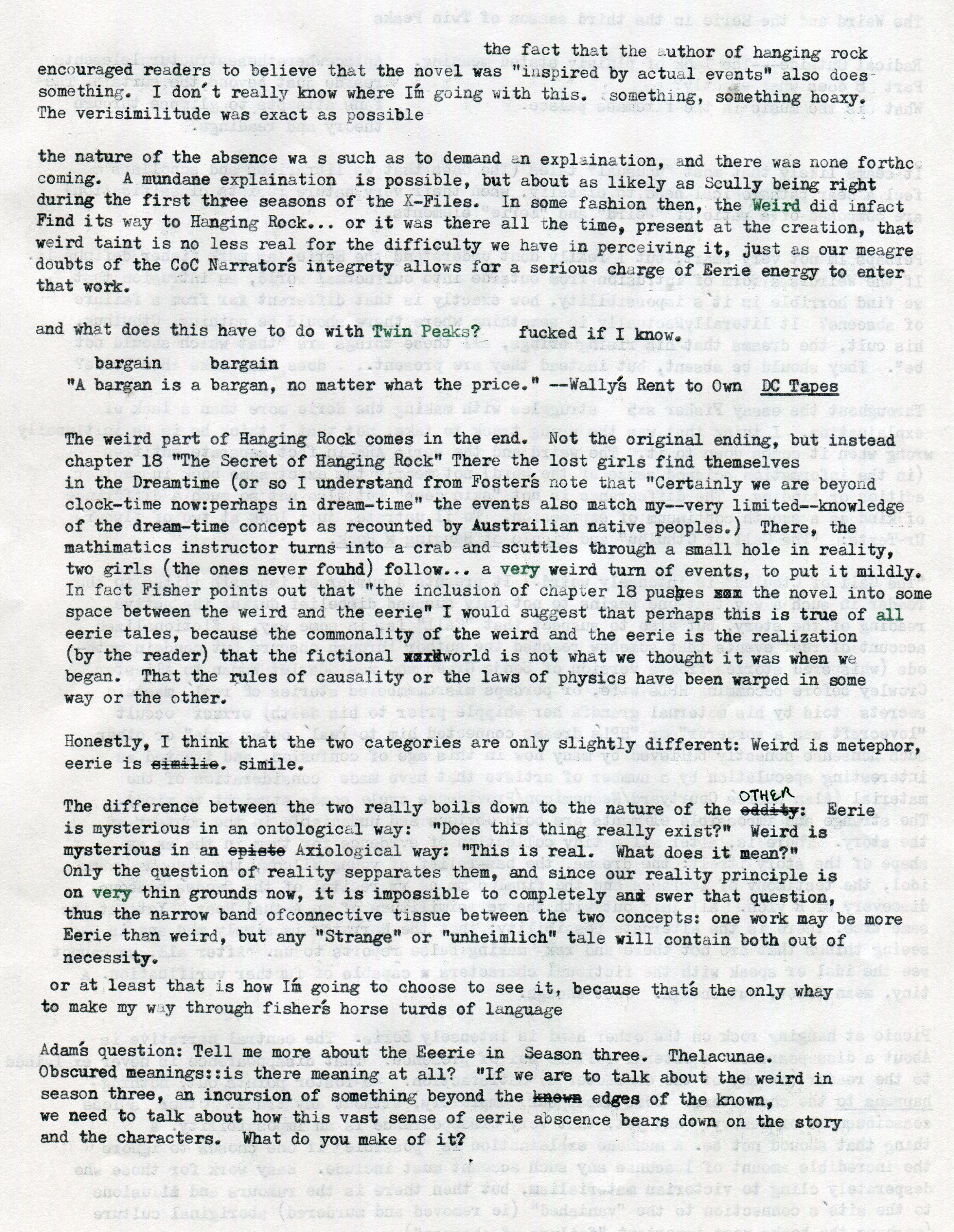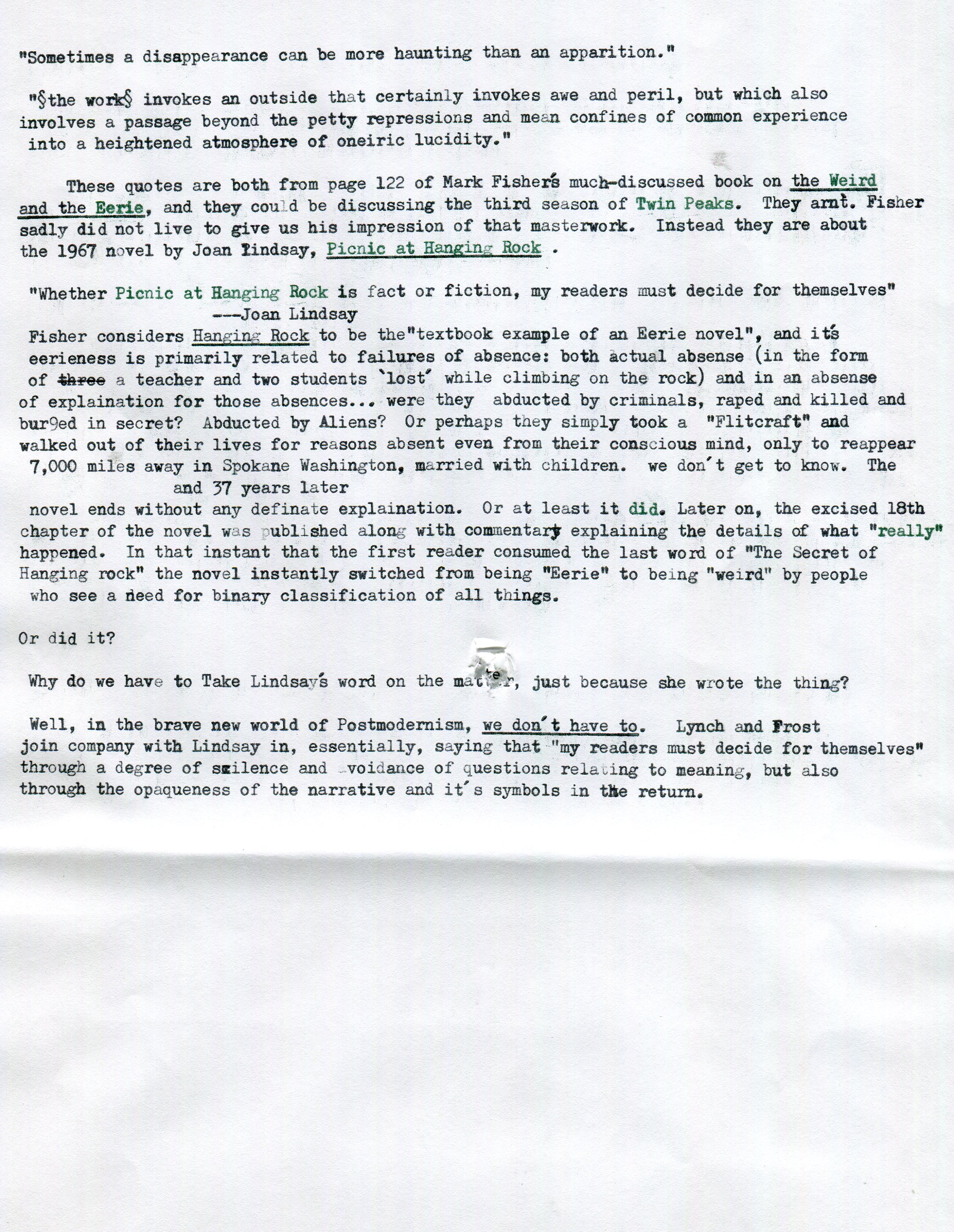This episode marks the last in a series of five episodes following our re-watch of Twin Peaks: The Return, which feature guests each of whom bring a unique and thorough perspective to the puzzling, beautiful, haunting, heartbreaking, harrowing and frustrating text that is Twin Peaks. Karl and I would love to offer our deepest thanks to John Thorne, Rob King, John Bernardy, Lindsay Stamhuis, and of course, this episode’s guest Adam Stewart. We hope to talk to each of them again, someday soon.
Our last guest in this series, Adam Stewart of Diane Podcast takes us into a broad view of Twin Peaks: the space of “post-theory” Twin Peaks. To get there, we need to talk about hauntings. We start with the classic author of ghost stories M.R. James, what made his work so special at the time, and why his work resonates now, and why it also resonates with our beloved show.
We talk about John Thorne’s new book, Ominous Whoosh and question whether Twin Peaks theory doesn’t get any better, or comprehensive, and if so, now what?
From there, things get “hauntological,” (a term coined by Jacques Derrida, and popularized in the modern era by media critics such as Mark Fisher, a podcast favorite for Diane as well as us), and we see how the past haunts the present in the real world, in the world of the show, in media at large, and how all of these realms interplay and comment on each other.
For a deeper view, we discuss the concept of “late style” in art, and how David Lynch’s late style comes to bear as he revisited the world of Twin Peaks all these years later.
Podcast: Play in new window | Download
Subscribe: RSS



